Not far from the bustle of Southwark’s Borough Market where tourists flock, traders holler and trains rumble and thump overhead into London Bridge Station, there sits a quiet backwater called Redcross Way; a little-known street, often devoid of traffic or people.
The only sign of life down here is the ‘Boot and Flogger’; a secretive, atmospheric wine bar opposite which stand these rather extraordinary gates, draped in ribbons, trinkets and hand-written messages:
These gates guard the entrance to the morbidly named ‘Crossbones Yard’; a frequently overlooked slice of London’s murkier history.
*
The exact year in which Crossbones Yard was established is a mystery- even one or two Roman remains have been found here. It certainly dates back to at least medieval times and is primarily a remnant of an era in which Southwark acted as London’s ‘Sin-City’…
In those days, the City of London was confined to the north bank of the Thames, still locked in by the defensive wall which had been laid out by the Romans many generations before.
Already a city of immense wealth, the capital was governed by staunch laws which ensured everything ran like clockwork and that her God-fearing citizens knew their place and generally behaved themselves.
Every evening at 9pm, the bells of St Mary Le Bow Church would begin to ring, signalling the start of the nightly curfew. When these bells commenced their clanging, London Bridge- the famous crossing cluttered with shops and houses- would close its gates for business, keeping undesirable riff-raff at bay.

Old London Bridge… Southwark is towards the bottom of this contemporary etching
However, a few hundred feet away on the opposite bank of the Thames, things would just be starting to wake up…
Cluttered around the southern foot of London Bridge lay the settlement of Southwark which, thanks to a setup known as the “Liberty of the Clink”, was a practically lawless place where anything went and Londoners came to party…. it was rather like an extremely early, uncontrolled version of Las Vegas!
Over in the city, depraved entertainments were forbidden but here, across the Thames in sinful Southwark, there were no restrictions.
What went on in Southwark stayed in Southwark… a place where people came to frequent the many taverns, to visit the theatre (a civilised pastime today, considered a heinous pursuit back then), to bet on dice, cock-fighting and bear baiting, to have a punch up… and to pop into the ‘stews’- a slang term for brothel of which there were a great many.
*
The scant authority which did exist in Southwark emanated from a surprisingly holy source; the heathen place being presided over by the Bishops of Winchester…
Founded in AD676, the Diocese of Winchester was one of the largest and most powerful in the country. Consequently, it was decided that the Diocese should establish a base within convenient reach of the capital. So, in 1109, a palace for the Bishops of Winchester was built in Southwark- the remains of which can still be seen today on Clink Street.

The Remains of Winchester Palace, Clink Street (Photo: Wikipedia)
Being such powerful landowners, the Bishops serving the Diocese of Winchester held a firm financial grip over Southwark.
Although a prison- ‘The Clink’ (today a museum)- was constructed near the palace to deal with certain troublemakers, the Bishops pretty much let Southwark’s sinners get on with it… in fact, due to their status as landlords, the Bishops of Winchester actually made a tidy profit out of the debauchary, renting out land and premises to facilitate the sordid goings on.
The brothels were no exception, thus paving the way for an extraordinary anomaly… the holy men technically became pimps…

Harvey Keitel as ‘Sport’; the sinister pimp from the 1976 film, ‘Taxi Driver’… a role somewhat emulated centuries earlier by the Bishops of Winchester!
As well as collecting rent from the working girls, the Bishops also regulated the stews as a legitimate business, controlling opening hours and enforcing certain ground rules.
Buildings that belonged to Southwark’s red light district had to be painted white and were also required to display a specific sign, similar to ones used to denote inns and taverns- the most common being the image of a cardinal’s hat.
It is estimated the Bishops controlled around 18 brothels, all of which had pub-like names- ‘The Half moon’, ‘The Cross Keyes’, ‘The Boars Head’, ‘The Gun’, ‘The Castle’ and so on.
Because of this arrangement, the working girls of Southwark became known as the ‘Winchester Geese’, and it is said that this is where the rough and ready slang term, “bird” (meaning woman) may have originated from.

Modern plaque on the gates of Crossbones Yard
Despite helping the Bishops of Winchester turn a quick buck, the prostitutes of Southwark were still considered to represent the pinnacle of sin.
Consequently, when a Winchester Goose died, it was forbidden to bury her in consecrated ground… and this is where Crossbones Yard came in.
The yard was essentially a dumping pit for the heathen, an unconsecrated patch where bodies could be cast to the worms with zero ceremony.
In 1598, John Stow- in his fascinating book, ‘A Survey of London’ (essentially the very first guide-book ever written about the capital) recalled Crossbones Yard and its sad purpose:
“…these single women were forbidden the rites of the church so long as they continued in that sinful life, and were excluded from Christian burial if they were not reconciled before their death. And therefore there was a plot of ground called the Single Women’s Churcyard appointed for them far from the parish church.”

John Stow who described the burial ground in his early guide book
The Bishops’ lucrative pimping side-line was abruptly ended (“put down by the King’s commandment… proclaimed by sound of trumpet” as John Stow described it) in 1546 by Henry VIII- rather ironic considering that tyrannical monarch’s track record!
*
Despite being taken out of the the Bishops of Winchester’s hands, the brothels gradually began to creep back over the following decades and were once again in full swing by Shakespeare’s time, jostling for space with the Bard’s equally naughty Globe Theatre. This second wave of debauchery was later halted by the ultra-puritan, Oliver Cromwell.
Throughout this turmoil, Crossbones Yard continued to accept burials- there were plenty of crooks and poverty-stricken paupers to go around and many of these unfortunate souls found their final resting places here
When Guys Hospital was founded nearby in 1721, Crossbones Graveyard became a popular target for the ‘resurrectionists’ -aka body-snatchers for whom the large, disease ridden pit provided a regular bounty of fresh corpses, ripe for dissection and the attention of curious, scientific minds.

Body-snatching…
Crossbones Yard continued to accept the dead well into the 19th century.
Excavations from the 1990s revealed that between 1800-1853, 66% of the souls dumped here were under the age of 5, the main causes of death being smallpox, tuberculosis and cholera; a tragic sign of the desperate levels of poverty which haunted London at the time.
During this era, it is most likely that the great Victorian writer, Charles Dickens would have been familiar with the packed graveyard. In 1824, whilst his father was incarcerated in the nearby Marshalsea debtors’ prison, the young 12 year old Dickens lived on Lant Street, a stone’s throw from Redcross Way.
The area around Southwark would later go onto play an important role in his 1855 masterpiece, Little Dorrit.

Map showing Lant Street, where Dickens lived as a youngster, in relation to Redcross Way
Towards the end its life, Crossbones Yard was quite literally full- “overcharged with dead”- with bones and body parts lurking unsettlingly close beneath the topsoil- even poking out in some cases.
Considered a public health hazard, the dejected graveyard was finally closed in 1853, the land was sold and a warehouse built on top.
Overall, it has been estimated that some 5,000 souls were buried here over the years.
*
Crossbones Yard was rediscovered in the 1990s when work was being carried out on the Jubilee line extension.
Today, it lies beneath a sorry patch of concrete and the former unconsecrated burial ground has become an unofficial shrine to the ‘outcast dead’.
As these pictures show, people come here to write messages and dedicate objects to those who are seen as having passed away whilst living on the edge of society. Many of the melancholy dedications on display are in memory of homeless people, alcoholics and prostitutes.
At 7pm on the 23rd day of every month, a vigil often involving poetry recitals, singing and dancing is held at the gates. All are welcome.
Depressingly, the site has been under the threat of redevelopment for some years now. Thankfully, a committed group of people have been campaigning to save this important area; the ultimate wish being that a peaceful garden of remembrance will eventually be created- a fitting tribute to the 1,000s of dead who were cast aside here so unceremoniously.
For more information, please follow this link to the excellent Crossbones website, where you can find out more and sign a petition to preserve the site.

A sad teddy, lying in tribute within Crossbones Yard






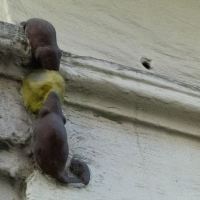
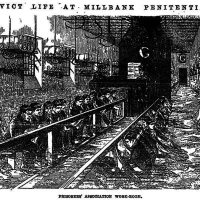
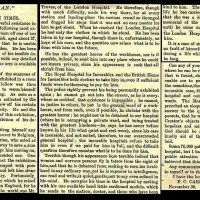
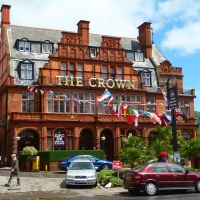

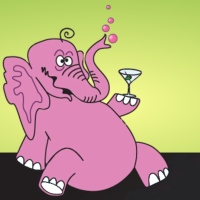

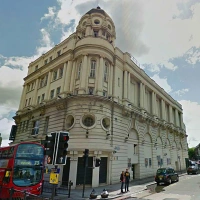

Despite being a frequent visitor to the Borough, I was unaware of the petition but have now signed it. I think it right and fitting that the “outcasts” (most of whom had no choice as to the life they led and the death that followed it) should be remembered. A garden of remembrance also would be a welcome oasis of calm in the midst of city bustle.
The historical background laid out in your post is also welcome and it added some useful details to what I already knew.
Many thanks. Let’s hope the garden comes to fruition eventually. The next vigil is Saturday evening (23rd June)
Nice piece Robert. I think the graveyard deserves to be recognised by more people. Keep up the good work.
Having found this has left me so so sad. I am overwhelmed by the love oozing from this tragic place.
God save humanity
Those are beautiful words, Margaret. Thank you so much.
[…] Although the exact age of the seat is unknown, it’s most likely to have been established around the 12th or 13th century; a period when London was beginning to spread west (thanks to the consecration of Westminster Abbey in 1065) and south, where Southwark was gaining a reputation as a seedy but popular entertainment district (if you’d like to find out more about Southwark’s depravity during this era, please take a look at my previous post; Bishops, Bones and Birds…) […]
[…] It is also possible that the allusion may have been included as an early form of advertising for the tavern, especially as it was within staggering distance of sinful Southwark’s playhouses and debauchery! […]
[…] Disney Street- and its little offshoot, Disney Place– are two thoroughfares which form a small dogleg between Marshalsea Road and Redcross Way. […]